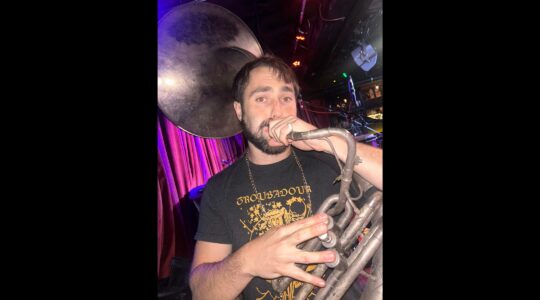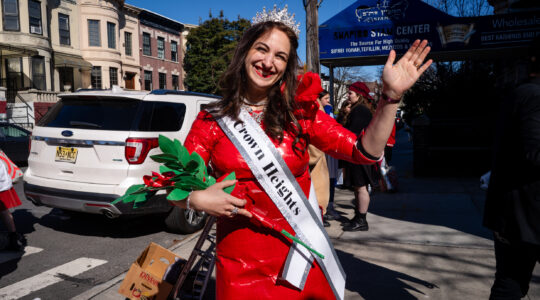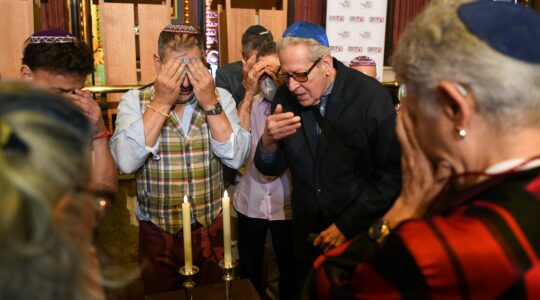Steve Hoffman sees the world in black and white — at least when he is looking through a camera lens. In 1998, Hoffman focused on the Chabad-Lubavitch community of Crown Heights, in part because he knew the community would photograph well in his preferred palette.
The chasidic sect’s spiritually infused, communal lifestyle and its distinctive look — men characteristically wear black suits and fedoras — appealed to Hoffman, who says the group has an “old-world look in a modern society.”
The sect takes its name, Chabad, from an acronym of Hebrew words for wisdom, comprehension and knowledge, and traces its roots back over 250 years to the town of Lubavitch in Belorussia. Today, the Chabad-Lubavitch are a familiar presence on New York streets and throughout the world, especially because of their active outreach to other Jews.
A Brooklyn native, Hoffman spent three years among the community, photographing adults and children in prayer and at study, celebrating holidays and lifecycle events and in candid moments in the neighborhood around the group’s world headquarters at 770 Eastern Parkway. Nearly 60 of those images make up “The Lubavitch of Brooklyn, An Intimate Portrait,” on view at the Museum of the City of New York. The exhibition is presented in partnership with the New York Regional Board of the Anti-Defamation League.
Many of Hoffman’s photographs are documentary. Numerous images, including a short video, show men wrapped in prayer shawls and tefillin, the leather boxes containing prayer scrolls that Jews wear during daily worship. A group of images show young men arguing intensely over open texts, and one shot captures a pair sleeping with their faces planted in their books, apparently overcome after long hours of discourse. Several photographs indicate the community’s embrace of modern technology, including one of the “Mitzvah Tank,” a mobile home that serves as a traveling synagogue.
Hoffman’s lens sometimes frames extraordinary moments. One image shows a solitary woman at the grave of the sect’s spiritual leader, the Grand Rebbe Menachem Schneerson, who died in 1994. In perhaps the show’s best image, a group of men are gathered around the Rebbe’s tomb, their faces obscured by prayer books, beards or the brims of their dark hats. Only one face, that of a clean-shaven young man, is seen in full as he reads one of hundreds of handwritten notes left at the grave by devotees who visit by the busload.
While museumgoers may get a closer look at aspects of Chabad-Lubavitch life, there is little in-depth explanation, and those unfamiliar with Jewish customs may be mystified by some of what they see.
Hoffman acknowledges the exhibition’s esoteric quality. But he says his goal was to convey the community’s inspiring commitment to religious life. “I have a lot of respect for what they’re trying to do,” he says.
“The Lubavitch of Brooklyn, An Intimate Portrait” is on view through Feb. 3 at the Museum of the City of New York, 1220 Fifth Ave., Man., (212) 534-1672. Wed.-Sat, 10 a.m.-5 p.m.; Sun., 12-5 p.m. $7, $4. Families, $12.
The New York Jewish Week brings you the stories behind the headlines, keeping you connected to Jewish life in New York. Help sustain the reporting you trust by donating today.




